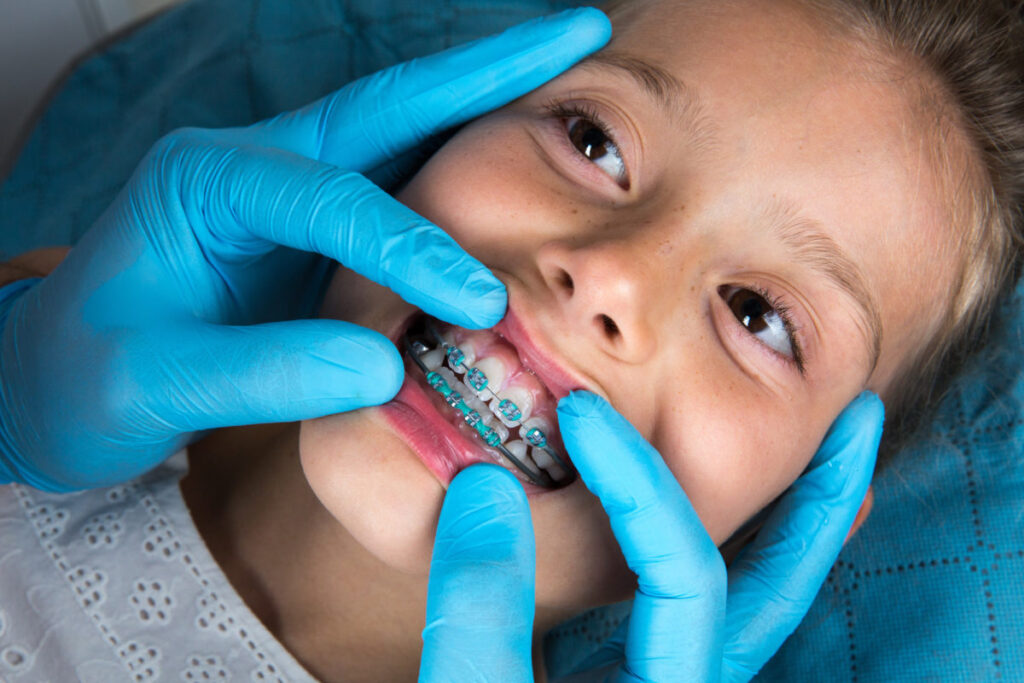When to Consider Braces for Your Child: A Guide for Parents
Children’s dental health is of utmost importance, and as parents, we want to ensure they have the best possible smile. Braces can play a significant role in correcting dental issues, improving oral health, and boosting self-confidence. However, as a parent, it’s crucial to know when to consider braces for your child. In this comprehensive guide, we will explore the signs indicating a need for braces, age considerations, the consultation process, treatment duration, costs and insurance coverage, lifestyle adjustments, emotional effects, aftercare, and more. By the end, you will have the knowledge and insights necessary to make an informed decision regarding your child’s orthodontic needs.
Understanding the Basics of Braces
Before delving into when to consider braces for your child, it’s essential to understand the basics. Braces are orthodontic devices designed to correct misaligned teeth and jaw problems. They work by applying gentle pressure over time, gradually moving the teeth into their proper positions. There are various types of braces available, including traditional metal braces, ceramic braces, lingual braces, and Invisalign aligners.
Recognizing the telltale signs that signal a requirement for braces
Recognizing the signs that your child may benefit from braces is crucial. Some common indicators include crooked or misaligned teeth, an overbite or underbite, crowded or gapped teeth, and jaw alignment issues. These issues can affect your child’s dental health and overall well-being. If you notice any of these signs, it’s advisable to consult with an orthodontist for an evaluation.
Age Considerations for Braces
The timing of orthodontic treatment plays a significant role in its effectiveness. Early orthodontic intervention, also known as interceptive orthodontics, may be recommended for children as young as seven years old. However, the optimal age for braces typically falls within the teenage years when most permanent teeth have erupted. Starting orthodontic treatment at the right time can yield better outcomes and reduce the need for more extensive interventions later.
Consultation with an Orthodontist
When considering braces for your child, finding a qualified orthodontist is crucial. Schedule an initial consultation to discuss your concerns and your child’s dental history. During the examination, the orthodontist will assess your child’s teeth, bite, and jaw alignment. They will also discuss the available treatment options, including the types of braces suitable for your child’s specific needs.
Evaluating the Need for Braces
To determine the need for braces, an orthodontic assessment is necessary. This typically involves X-rays, impressions, and other diagnostic tools to evaluate your child’s dental structure thoroughly. The orthodontist will analyze your child’s bite, tooth positioning, and jaw relationship to identify any potential complications. Based on this assessment, they will recommend the most suitable treatment plan.
Treatment Process and Duration
Orthodontic treatment typically occurs in phases. The initial phase involves the placement of braces or aligners, followed by regular adjustments to gradually move the teeth. The duration of treatment varies depending on the complexity of the case, but it generally ranges from one to three years. During this time, your child will visit the orthodontist for progress checks and necessary adjustments to ensure the treatment is on track.
Costs and Insurance Coverage
The cost of braces can vary depending on several factors, including the type of braces, the severity of the dental issues, and the location. On average, braces can range from a few thousand to several thousand dollars. It’s essential to check with your dental insurance provider regarding coverage for orthodontic treatment. Some insurance plans offer partial coverage, while others may have specific reimbursement options. Additionally, many orthodontists provide flexible payment plans to help ease the financial burden.
Lifestyle Considerations
Braces require some adjustments to your child’s lifestyle. Certain dietary restrictions may apply, such as avoiding sticky or hard foods that can damage the braces. Your child may also experience slight changes in speech initially, but this usually improves over time as they adjust to the braces. It’s important to note that braces do not prevent your child from participating in sports or playing musical instruments. However, they should wear a mouthguard during contact sports to protect their teeth.
Emotional and Psychological Effects
Braces can have emotional and psychological effects on your child. They may feel self-conscious or experience a temporary decrease in self-esteem due to the noticeable appearance of braces. As a parent, it’s essential to provide support and encourage a positive self-image. Assure your child that braces are temporary and that the end result will be a beautiful, confident smile. Remind them of the long-term benefits and emphasize that many of their peers may also be undergoing orthodontic treatment.
Aftercare and Retention
After the braces are removed, your child will likely need to wear retainers to maintain the results of the orthodontic treatment. Retainers play a crucial role in maintaining the alignment of your teeth, preventing them from reverting to their initial positions. The retention period varies for each individual but typically lasts for several months to a few years. It’s crucial to follow the orthodontist’s instructions regarding retainer usage to ensure the long-term success of the treatment.
Frequently Asked Questions (FAQs)
1. Can braces be painful for my child?
Answer: Braces can cause some discomfort or soreness initially and after adjustments. However, the pain is usually mild and temporary. Over-the-counter pain relievers and orthodontic wax can help alleviate any discomfort.
2. How often should my child visit the orthodontist during treatment?
Answer: Typically, regular visits every 4 to 8 weeks are necessary for adjustments and progress checks. However, your orthodontist will provide you with a personalized schedule based on your child’s treatment plan.
3. Are there any alternatives to traditional braces?
Answer: Yes, alternatives to traditional braces include ceramic braces, lingual braces, and Invisalign aligners. These options offer more discreet treatment but may not be suitable for all cases. Consult with your orthodontist to determine the best option for your child.
4. Can my child still play musical instruments with braces?
Answer: Yes, your child can continue playing musical instruments while wearing braces. They may need a short adjustment period to get used to the braces, but they should be able to play normally with practice and patience.
5. What should I do if my child loses a bracket or wire?
Answer: If a bracket or wire becomes loose or falls off, contact your orthodontist for guidance. They will advise you on whether immediate attention is needed or if it can be addressed during the next scheduled visit.
Conclusion
Considering braces for your child is an important decision that requires careful consideration. By understanding the signs indicating a need for braces, consulting with an orthodontist, and being aware of the treatment process, costs, and lifestyle adjustments, you can make an informed choice. Remember that braces not only improve dental health but also contribute to your child’s overall well-being and self-confidence. Encourage open communication with your child throughout the process, and provide the necessary support to ensure a positive experience.




